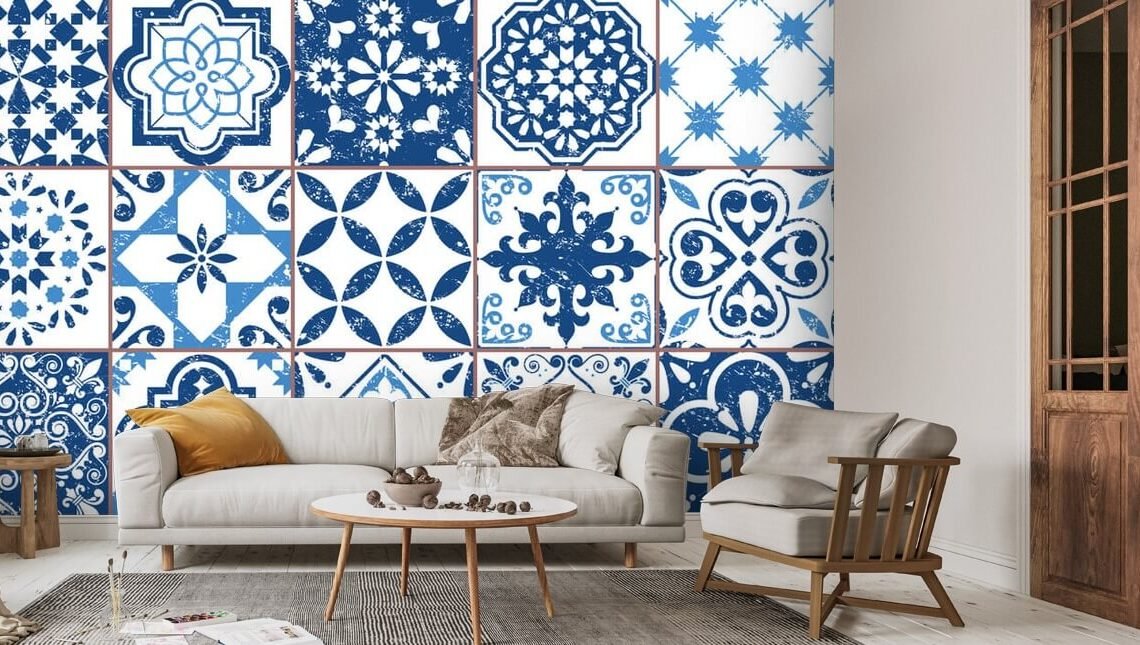Mosaic tiles, with their ancient origins and enduring allure, embody a rich history of artistry, craftsmanship, and cultural significance. These small, vibrant tesserae, delicately arranged to form intricate patterns, have adorned architectural wonders, embellished everyday objects, and served as a testament to human creativity across civilizations.
The story of mosaic tiles dates back thousands of years, tracing its origins to ancient Mesopotamia, Greece, and Rome. The word “mosaic” derives from the Greek term “mousaikos,” signifying the work of the Muses, highlighting its artistic nature. Initially, mosaics were crafted using pebbles, shells, and later stones. However, the innovation of using small colored pieces of glass, called tesserae, revolutionized mosaic art, enabling finer detail and vibrant hues.
The craftsmanship behind mosaic tiles is a testament to human ingenuity. Mosaicists meticulously shape and place each tessera, often no larger than a fingernail, to compose elaborate designs. Whether depicting mythological scenes, religious motifs, geometric patterns, or everyday life, mosaic tiles serve as visual narratives, capturing moments frozen in time.
Throughout history, mosaic tiles have adorned numerous architectural wonders. The Byzantine Empire, known for its opulent mosaic decorations, embellished churches like the Hagia Sophia in Constantinople with shimmering gold tesserae, creating an ethereal ambiance that transcends time. Similarly, the intricate mosaics of Ravenna, Italy, found in places like the Basilica of San Vitale, showcase a fusion of Eastern and Western influences, captivating visitors with their exquisite beauty.
Beyond grand architectural feats, mosaic tiles have adorned various spaces and objects, adding a touch of elegance and storytelling. From the floors of affluent Roman villas to the walls of Moroccan riads, these tiles have adorned spaces both sacred and domestic. In modern times, mosaic artistry has transcended traditional boundaries, finding its way onto contemporary structures, interior designs, and public spaces, blending tradition with innovation.
The cultural significance of mosaic tiles extends far beyond their aesthetic appeal. They serve as a testament to the diverse cultures and traditions that birthed them. In Islamic art, mosaic tiles, often featuring intricate geometric patterns, serve as a manifestation of divine order and beauty. In Spain and Portugal, the art of azulejos, ceramic tiles embellished with vibrant colors, reflects a fusion of Moorish and European influences, adorning palaces, churches, and homes.
Moreover, mosaic tiles embody resilience. Across centuries, they have weathered the passage of time, surviving wars, natural disasters, and human intervention. Restoration efforts aimed at preserving these artistic marvels highlight their enduring value, ensuring that future generations can marvel at their beauty and historical significance.
In contemporary times, the allure of mosaic tiles continues to captivate artists, designers, and enthusiasts worldwide. The versatility of materials—glass, ceramic, stone, and even recycled elements—allows for boundless creativity. From intricate mosaic murals in public spaces to personalized mosaic artworks adorning private residences, these tiles remain a canvas for imagination.
The resurgence of interest in handmade crafts and traditional artistry has revitalized the appreciation for mosaic tiles. Artisans and craftsmen continue to breathe new life into this ancient art form, blending traditional techniques with modern sensibilities, creating timeless pieces that bridge the past with the present.
In conclusion, mosaic tiles represent more than mere decorative elements—they encapsulate a narrative of human history, artistic brilliance, and cultural diversity. From ancient civilizations to contemporary designs, their enduring allure lies in their ability to transcend time, weaving stories and captivating our imaginations with their intricate beauty. As long as there are artists and enthusiasts willing to embrace their artistry, mosaic tiles will continue to inspire, enchant, and adorn our world. Contact us for more information on shop for mosaic tiles.







